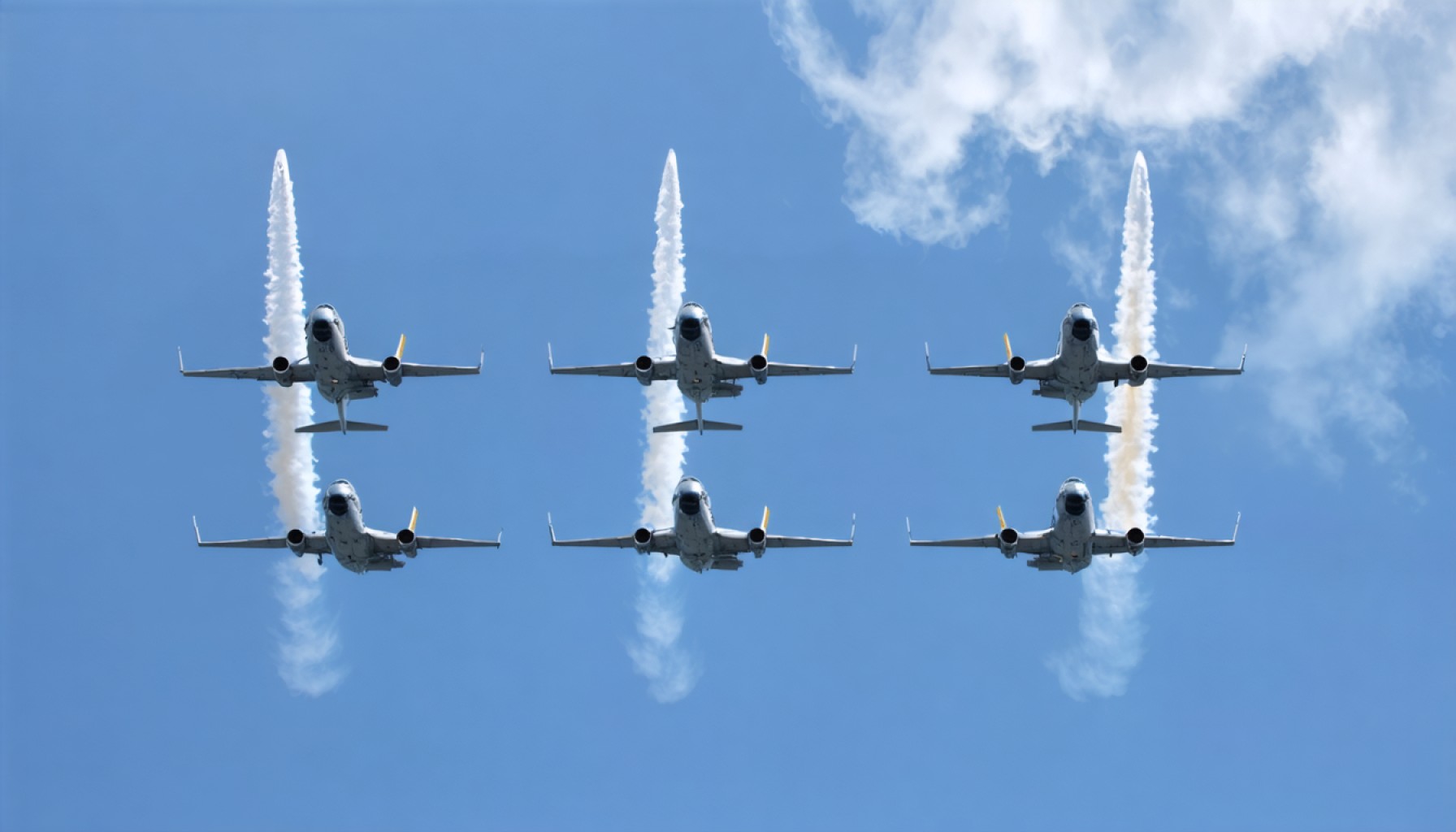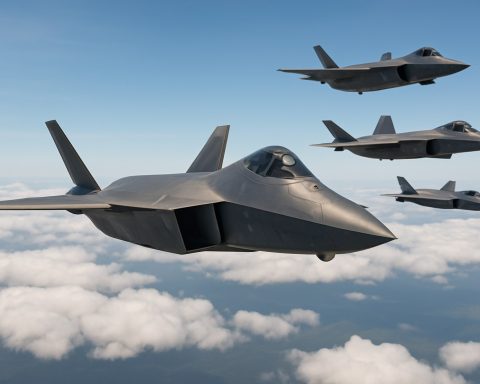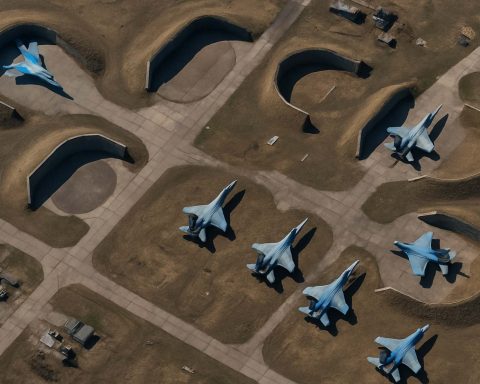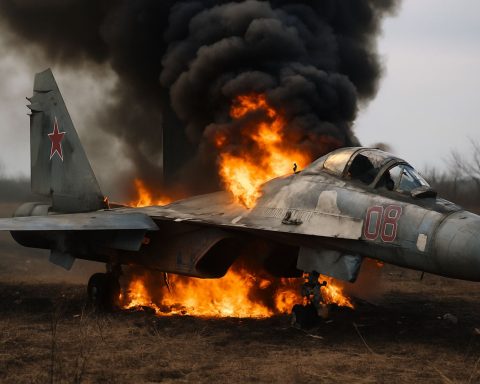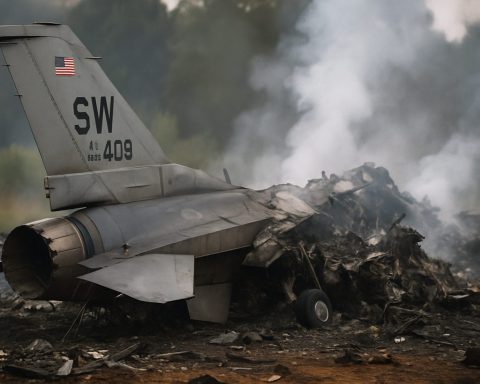- Japan’s Air Self-Defense Force (ASDF) scrambled aircraft 704 times in fiscal year 2024, marking an increase in operations amid rising tensions.
- Chinese military aircraft were involved in 464 scramble incidents, accounting for 65.9% of Japan’s total defensive actions.
- Drone detections have tripled, reaching 30, highlighting an escalation in unmanned aerial operations, particularly near Amami-Oshima Island.
- Russian aircraft scrambles have increased to 237, with intrusions over Hokkaido’s Rebun Island prompting the use of decoy flares by the ASDF for the first time.
- Japan is enhancing its aerial defense strategies amidst evolving geopolitical dynamics and technological advances in warfare.
Japan’s skies have become a chessboard of strategic maneuvers and vigilant responses. With the sound of fighter jets piercing through the air, the Air Self-Defense Force (ASDF) has intensified its operations, scrambling its aircraft 704 times in fiscal year 2024, marking a palpable increase from the previous term. These actions underscore a growing tension, as the skies above witness an intricate dance of military prowess and national defense.
In an ever-evolving geopolitical landscape, China’s presence looms large in the skies. Although scrambles against Chinese military aircraft slightly decreased to 464 occurrences, they still represented 65.9% of Japan’s defensive maneuvers. This intricate ballet of aerial confrontations reached a new pitch last August when Chinese aircraft breached Japan’s sovereign airspace near the remote Danjo Islands, a first in the historical chess match along these coordinates.
The sky isn’t the only battlefield. A silent, steady hum alerts to the future of warfare—drones. The Ministry’s radar captured a dramatic tripling in drone detections, with figures soaring to 30. The increase is sharp and undeniable, suggesting that China might have refined its drone operations from mere trial flights to full-fledged deployment. Their drones now sweep across Japan’s southwestern frontiers, as seen off Amami-Oshima Island, marking the island’s initial cameo in this aerial drama.
Meanwhile, Russian forces, undeterred, continue their strategic exertions. Scrambles against Russian aircraft have climbed to 237, up by 63. September witnessed a notable escalation with Russian planes intruding thrice into airspace off Hokkaido’s Rebun Island. The ASDF responded with a defensive ballet of first-time decoy flares, a fiery reminder of Japan’s readiness to guard its territorial sanctity.
Japan stands resolute at the crossroads of aerial strategy and innovation, forging defenses against the persistent whispers of drone wings and the thunderous roar of fighter jets. As technology soars and tactical boundaries are redefined, this increase in airborne vigilance serves as a stark reminder: the defense of a nation’s skies has become an ever more sophisticated and necessary endeavor.
Japan’s Aerial Defense: Strategic Insights and Future Trends
Analyzing the Rapid Evolution of Japan’s Air Defense
Japan’s strategic air maneuvers reflect a complex interplay of geopolitical dynamics and technological advancements. As highlighted, the Air Self-Defense Force (ASDF) executed 704 scrambles in fiscal year 2024, with a notable presence in response to Chinese and Russian military activities. Let’s delve deeper into the facts, provide insights into the broader implications, and offer practical advice for stakeholders.
Key Insights and Trends
1. Geostrategic Considerations:
– China’s Naval and Aerial Expansion: China’s assertive stance in the East China Sea has triggered Japan’s responsive strategies. The breach near the Danjo Islands underscores a pivotal geopolitical flashpoint. According to experts, increased escort operations might be anticipated around these waters.
– Russia’s Strategic Exertion: The escalation with Russia, particularly over Hokkaido, aligns with Moscow’s broader posturing in the Pacific. Such incursions include not just aerial but also naval activities, demanding comprehensive surveillance.
2. Technological Advancements in Defense:
– Drones as the Emerging Menace: The tripling of detected drone activities suggests a pivotal shift towards unmanned surveillance and potential combat roles. China’s reputed advancements in drone technology could reshape the aerial conflict terrain.
– ASDF’s Defensive Upgrades: Japan’s use of decoy flares and integration of advanced radar systems indicates proactive modernization to counter sophisticated aerial threats.
3. Global Defense Collaborations:
– Japan’s alliances, particularly with the U.S. and other QUAD nations, are likely to deepen. Enhanced joint military exercises and intelligence-sharing protocols could serve as critical deterrents to adversarial actions.
Market Forecasts & Industry Trends
– Defense Equipment Market: Japan’s pivot towards modernizing its defense capabilities will stimulate growth in domestic and international defense procurement markets. This could include investments in stealth technology, radar systems, and anti-drone solutions.
– R&D in Military Technology: Expect burgeoning investments in AI-integrated defense systems and autonomous drones designed for both offense and defense in contested areas.
How-To Steps & Prospects
– For Policymakers and Defense Contractors:
– Expand Research on Counter-Drone Technologies: Investing in AI-driven solutions that can autonomously detect and neutralize drone threats is imperative.
– Enhance Air Defense Exercises: Conduct regular, multifaceted scrambles that combine traditional fighter responses with new technologies like cyber warfare tactics to ensure readiness.
– For Regional Analysts and Strategists:
– Monitor Chinese and Russian Military Developments: Closely tracking naval and aerial innovations and doctrines will yield valuable predictive insights.
– Analyze Diplomatic Developments: Watch for shifts in regional alliances and treaties which can indicate upcoming strategic changes.
Pressing Questions Answered
– What are the implications of the increased drone activity?
Increased drone activity highlights the shift towards stealthier and more versatile military strategies. It necessitates robust counter-drone defenses, incorporating radar jamming and AI-driven detection systems.
– How does Japan’s response to these aviation threats compare globally?
Japan’s aerial defense measures, though historically defensive, now exhibit a forward-leaning stance paralleling other world powers like the U.S. and NATO members, which have similarly upgraded their aerial capabilities and response strategies.
Actionable Recommendations
1. Stay Informed: Defense stakeholders should regularly review military analysis reports to anticipate and understand potential threats.
2. Invest in Technology: Leverage advancements in AI and cyber-defense to enhance national security infrastructures.
3. Foster Diplomatic Dialogue: Engaging neighbors, even adversaries, in dialogue can help in diffusing tensions and preventing misunderstandings that might escalate into confrontations.
Japan’s air defense narrative is a testament to its strategic foresight and adaptability in an increasingly complex international arena. As Japan fortifies its skies, it embodies a blend of resilience, innovation, and diplomacy that shapes its defense paradigm.
For more insights about regional security trends and updates, consider visiting the Japanese Ministry of Defense.
